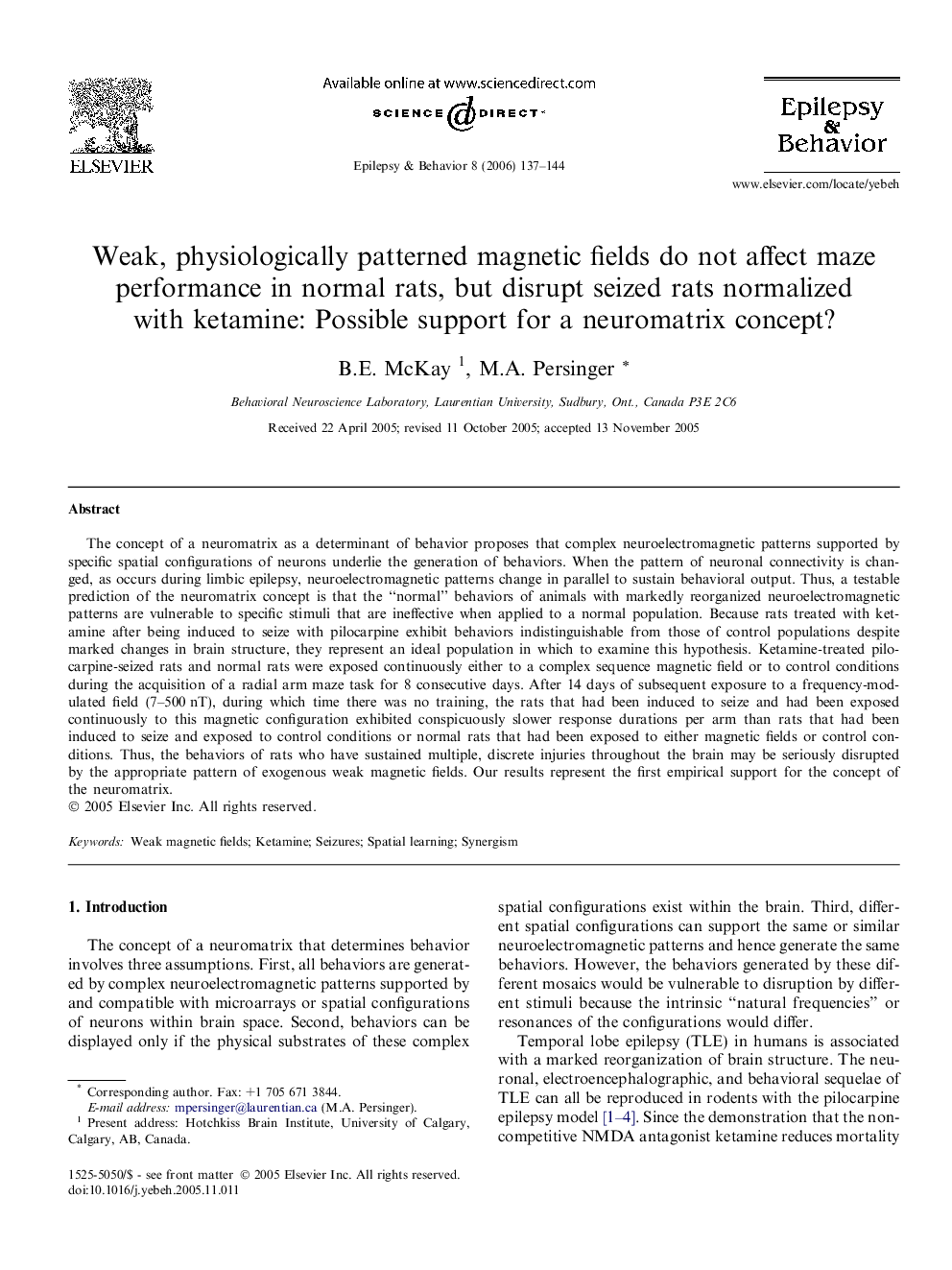| Article ID | Journal | Published Year | Pages | File Type |
|---|---|---|---|---|
| 3051659 | Epilepsy & Behavior | 2006 | 8 Pages |
The concept of a neuromatrix as a determinant of behavior proposes that complex neuroelectromagnetic patterns supported by specific spatial configurations of neurons underlie the generation of behaviors. When the pattern of neuronal connectivity is changed, as occurs during limbic epilepsy, neuroelectromagnetic patterns change in parallel to sustain behavioral output. Thus, a testable prediction of the neuromatrix concept is that the “normal” behaviors of animals with markedly reorganized neuroelectromagnetic patterns are vulnerable to specific stimuli that are ineffective when applied to a normal population. Because rats treated with ketamine after being induced to seize with pilocarpine exhibit behaviors indistinguishable from those of control populations despite marked changes in brain structure, they represent an ideal population in which to examine this hypothesis. Ketamine-treated pilocarpine-seized rats and normal rats were exposed continuously either to a complex sequence magnetic field or to control conditions during the acquisition of a radial arm maze task for 8 consecutive days. After 14 days of subsequent exposure to a frequency-modulated field (7–500 nT), during which time there was no training, the rats that had been induced to seize and had been exposed continuously to this magnetic configuration exhibited conspicuously slower response durations per arm than rats that had been induced to seize and exposed to control conditions or normal rats that had been exposed to either magnetic fields or control conditions. Thus, the behaviors of rats who have sustained multiple, discrete injuries throughout the brain may be seriously disrupted by the appropriate pattern of exogenous weak magnetic fields. Our results represent the first empirical support for the concept of the neuromatrix.
